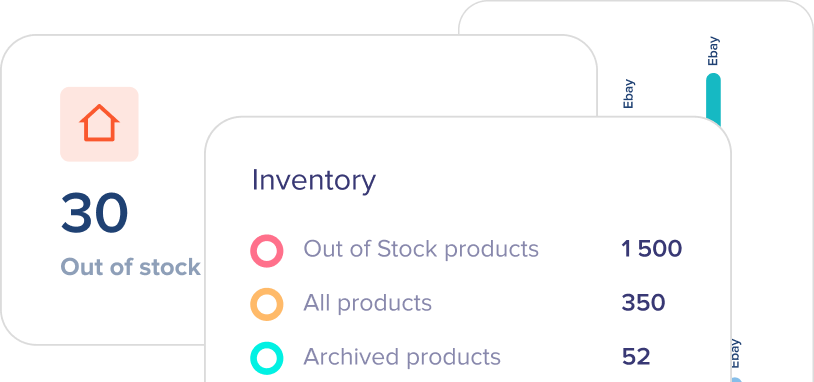The term “stock keeping unit” refers to a number (typically eight alphanumeric digits) merchants assign to items to monitor stock levels internally. SKUs should include data on a product’s most significant features, such as price, size, color, style, brand, gender, to name a few.

This information in the SKUs should be in the order of priorities. In other words, from most to least important. SKU numbers may contain both letters and digits, offering a great deal of versatility. They’re should be unique to your business. This means you can customize them to meet the needs and most common concerns of your customers or vendors.
What are the main differences between SKU Numbers and UPC Codes?
It is essential to understand that while SKU and UPC are used interchangeably and have similar characteristics, in-store and online shops use them for different goals.
Now, let’s break down the main differences between the two.
Universal product code (UPC) is a 12-digit numeric code. You can apply it to items for external use wherever they are sold. You can also meet this term as “UPC code,” which translates to “universal product code.”

On the other hand, Stock Keeping Unit (SKU) is used for internal use. It varies between 8-12 characters, identifies product peculiarities, accompanies a barcode, and determines the retailer directly.
Keep in mind that while a product’s UPC remains the same regardless of where it’s sold, various retailers assign it different SKUs.
It is essential to ensure that your SKUs and UPCs aren’t the same. A large number of merchants still utilize UPCs as SKUs.
However, smaller businesses, particularly those that manufacture their goods, may find building their own SKU system more advantageous. It is crucial to ensure to have your SKU indicate product characteristics. At the same time, the UPC identifies the manufacturer (first six numbers), item (following five characters), and check digit (last number.)
The check digit is created by adding and/or multiplying numbers in the code to prove legitimate UPC.
Why do SKU numbers matter?
SKU numbers can assist firms in efficiently tracking items in an inventory management system, speed checkout, forecast transactions, enhance the customer experience, and increase revenues by reducing human inventory mistakes. Below find some of the most significant benefits of SKU numbers that can help your business.
Efficient monitoring of your inventory
Companies can use SKUs to monitor the availability of their inventory. With a solid SKU design, you will be able to keep track of the status of your inventory in real-time. You can also determine when to order new products so that it never runs out.
This practice will lead to more efficiency and productivity in your overall business management as it will help you understand your company’s changing needs.
Enhanced customer experience
With SKUs, you can more efficiently plan and organize your store so customers and employees can quickly find what they are looking for. Effective SKU management will help you quickly identify items by category, department, vendor, or other features. With SKU numbers in place, you will also enhance store merchandising and provide customers with an enticing, well-organized experience, which will ultimately lead to increased sales.
How does it work?
As you read above, Retailers use SKU to track inventory and sales. Moreover, they can give analytical data helpful in developing strong relationships with vendors and consumers.
It is essential to understand that each business has its characteristics that impact the development of your SKU architecture. Remember, not every retailer will be tracking the same thing, so it’s critical to assess your company’s unique requirements. To design a system that matches your company’s specific needs, keep in mind the following steps.
Come up with an SKU format.
The first step in producing SKUs is establishing a standard format that all of your SKUs must adhere to. It is essential to determine which numbers and IDs will be included in your SKUs, as well as the sequence in which they will appear. It is vital to understand whether you want to mention the company’s name and the different characteristics of your items.
Make sure that SKU numbers begin with a top-level identifier
A top-level identification should be represented by the first two or three characters of each SKU. It can include the retail category, the supplier, to name a few. The primary purpose of this practice is to make sure that each SKU number represents the merchandising group and location of any item in your store.
Designate unique identifiers using the middle numbers
Use the central part of SKU numbers to add unique qualities to your product. It may include peculiarities like size, item type, subcategory, to name a few. Make sure that it is easy to understand.
Add a sequential number to the SKU
Adding sequential numbers for the most recent series of SKUs, such as 001, 002, and 003, simplifies setup and makes it more understandable. Moreover, it helps to add the clear distinction of old and new goods in a product line.
Meet the needs of your customers
It is essential to keep in mind what your consumer prioritizes the most about your product. For instance, if your customers mainly inquire about the color of your products, you might need to mention the color number at the start of your SKU so you can immediately provide your consumers with the information they need.
Select your inventory management system
Most point-of-sale systems will let you construct an SKU architecture within them. A POS, in general, will enable you to enter the necessary product data that you want to monitor. It usually includes the name of the item, description of the article, pricing, sizes, or colors, to name a few.
With the abovementioned data, you can swiftly manage your sales and inventories in one simplified system. With modern inventory management systems like eSwap, you can also have the data of every transaction in your inventory automatically updated, ensuring that you always know how much of each SKU number you have on hand.







